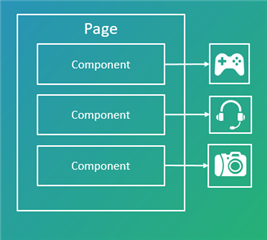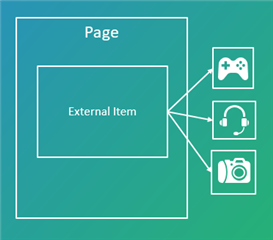We've started recording technical webinars about the Sites 9 release planned for mid-2018. See the first one on Unified Extensions by architect Likhan Siddiquee
In this week's webinar, I was able to introduce our work on integration services while , Connectors Solutions Architect, demonstrated the CRM and ECommerce scenarios along with an example connector.
Here are the follow-up questions asked by the participants.
Q: Where is (Store) "Tracking Info" stored? in MS Dynamics?
Yes, you can choose to store data elsewhere, but by design each CRM Connector will store data into that CRM in one or more fields.
The integration framework will also expose Contact details into the Ambient Data Framework claim store, which you could augment with more data and use during the session to, for example, store or use the data in other ways.
Q: Dependent form fields?
"A common requirement for CRM forms is to have one field dependent on the value of another. For example, when country is USA, show a State drop-down to the visitor. Is this possible with the ECL style connector?"
This isn't part of the current form builder but this might be an interesting addition to a future version of the form functionality in the CRM Accelerator. I'd imagine this could be either a manual editorial selection or something automatic where the CMS users just picks the country drop down and states are added automatically.
Consider submitting this or other suggestions on SDL Ideas for Connectors.
Q: Can ECL entities have relationships between each other reflected in the multimedia items e.g. (related products etc.)?
This depends on the use case and content model, which can be anything from direct links to classification (indirect relationships), to queries, or even personalization. Let me start with common "relationship" scenarios and then get into more technical details outside and within the context of Tridion Sites.
Linking Use Cases
The following table covers a few familiar content modeling use cases. "Content" may refer to Components or ECL Items, which are currently represented by stub Multimedia Components within the Content Manager. Offer the ability to link between ECL items by adding Content Manager-side metadata to the ECL stub Schema. Then resolve the reference either in publishing or delivery depending on your setup and the external systems APIs.
Intra-System Linking
Maybe you're trying to think outside the Tridion box. Nuno Linhares along with others in the community popularized the phrase, "How would you do it without Tridion?"
For system-to-system ("intra-system") linking, you need:
- Systems that are aware of each other, and/or a
- Standard way to recognize distinct entities
The industry standards include markup (XML, HTML), URLs (Uniform Resource Locators), or URIs (Uniform Resource Identifiers). Sometimes WebDAV urls or paths can help. Within rich text this could be images or anchor tags with an href attribute pointing to an item.
To implement something like this across non-Tridion systems, you might extend the 3rd-party system if possible. In ECL external metadata you might consider an extension or Custom URL to offer this kind of selection which could be stored in the external system.
If you are using Tridion, it's probably much easier to link between Components to/from ECL items rather than items from external systems.
Tridion Linking
Within the context of a given system you'll typically find the same approach. For example, within Tridion we have things like:
- Name space or system identifier (e.g. TCM, ECL, etc.)
- Tag and attributes (e.g. TCDL, xlink, xhref, etc.)
- Parameters to adjust how to interact with a link in terms of priority, which page to not use, etc.
We use these in the Content Manager, during rendering, publishing, or delivery-side retrieval.
Do the DXA modules also use the ADF underwater?
This observant question comes from Ingmar Umans (it's always a good sign when he asks particularly interesting questions).
Yes! The DXA modules that Niclas shared indeed use the Ambient Data Framework especially for the field personalization. As mentioned above, we're also planning a generic Contact Cartridge for CRMs to help with Contact integrations.
Thanks for those that attended the webinar and I hope these answers help!
Feel free to leave comments or ask questions in this post. Do check out the video. We'll share updates as we go along.

 Translate
Translate





